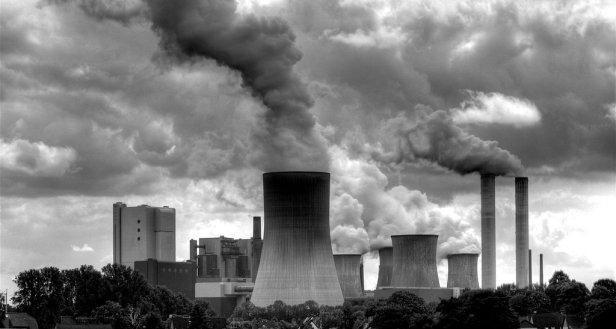 Regulating the coal industry would create jobs and protect human health.Photo: daviptThis article originally appeared in Triple Crisis.
Regulating the coal industry would create jobs and protect human health.Photo: daviptThis article originally appeared in Triple Crisis.
Does environmental protection destroy jobs? That may be the strongest argument that the pro-pollution lobby has going for it. No one wants to endorse dirty air and water in so many words, but hey, we’re just trying to save jobs at a time when millions are out of work. In one of the latest reincarnations of this idea, the electric utility industry claims [PDF] that regulating the disposal of coal ash could eliminate up to 316,000 jobs.
Ever sensitive to industry’s needs and wishes, Republicans in the House of Representatives have drafted a bill to ban federal regulation of coal ash, H.R. 2273. It’s expected to reach the floor of the House for a vote this week. Lobbyists supporting H.R. 2273 helpfully point out [PDF] that it will stop the destruction of 316,000 jobs.
A quick reality check: Regulating coal ash disposal means using earth-moving equipment, which doesn’t drive itself, constructing new facilities which don’t build themselves, and so on. Close your eyes and try to picture this, and you may see some workers on the premises. Environmental regulation generally creates jobs, including lots of blue-collar jobs in construction and manufacturing.
So it’s not surprising that, in my new report on the impacts of coal ash regulation, I found that it would increase employment by 28,000 jobs. Not only does regulation require coal-burning power plants to hire construction workers and others; additional jobs are created in the industries that produce equipment and supplies, like the earth-moving equipment; and still more jobs are created when those workers spend money on food, housing, and everything else.
Why, then, would anyone imagine that regulations kill jobs? My report also dissects the industry estimate of up to 316,000 jobs lost. More than 50,000 of those jobs are completely unexplained, resulting either from errors or from hidden assumptions that are not discussed in the industry report. Most of the rest — more than 200,000 — come from a wildly exaggerated estimate of the effects of a 1 percent increase in electricity rates. (Utilities would pass on the costs of regulation to their customers whenever possible, giving rise to the rate increase.)
That implausibly supersized response to a small price increase, the basis for the industry’s job loss figure, was based on a single estimate in an unpublished academic paper. The use of that figure ignored the many caveats and qualifications from the paper’s author. One of those caveats, as I explain in my report, could mean that lower employment causes higher electric rates, rather than vice versa.
What happens when you do the analysis correctly? I used the industry’s own estimate of the cost of regulation (from another study by the same consultants who came up with the job-loss estimates). I ran this number through the widely used IMPLAN model of the U.S. economy, which calculates direct, indirect, and induced (even more indirect) job impacts. The result is that the numerous expenditures required by regulation for waste disposal, wastewater treatment, and construction and operation of new facilities, combined with the impact of electricity rate increases on consumers, would lead to a net gain in employment.
Effects on employment are not the only basis on which to judge proposed regulations — perhaps not even the most important. The stated purpose of EPA regulations is to protect human health and the natural environment. EPA and independent researchers have identified many health hazards associated with coal ash disposal sites; drinking water from wells near one type of ash disposal facility can create a one in 50 chance of getting cancer from arsenic in the water [PDF]. A biologist has identified $2.3 billion of fish and wildlife losses due to releases of pollutants at 22 coal ash disposal sites. These are the types of issues that should be central to the debate on regulatory proposals.
Strict regulation of coal ash disposal would create a net increase of 28,000 jobs. This conclusion doesn’t, by itself, clinch the argument for such regulation. But it does free us of the unfounded fear of massive job loss, allowing us to evaluate the regulation on its merits.


